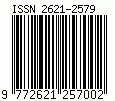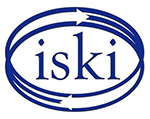Influence of Media Credibility and Information Quality on Visiting Interest: An Analysis of the @WonderfulIndonesia Instagram Account on Millennial Travelers
DOI:
https://doi.org/10.12928/channel.v12i1.535Keywords:
Elaboration Likelihood Model (ELM), information quality, media credibility, Instagram, digital tourism marketing, wonderful IndonesiaAbstract
Tourism in Indonesia holds significant potential, with domestic tourism being a primary focus for the government. The Ministry of Tourism and Creative Economy of the Republic of Indonesia has developed the "Wonderful Indonesia" branding, utilizing the @WonderfulIndonesia Instagram account to promote domestic tourism. This study examines the impact of media credibility and information quality on millennials' interest in visiting domestic tourist destinations, using the @WonderfulIndonesia account as a case study. Utilizing the Elaboration Likelihood Model (ELM) theory, the research emphasizes the importance of persuasive message delivery through digital platforms. Data were collected from a survey of 30 respondents and analyzed using validity, reliability, and multiple regression tests with SPSS 26. Results indicate that media credibility and information quality account for 31.6% of the variance in visiting interest, demonstrating a significant positive relationship. However, 69.4% of the variance is influenced by other factors, suggesting the need for further research into variables such as media exposure and content attractiveness.
References
Agustine, M., & Prasetyawati, Y. R. (2020). Pengaruh kualitas informasi Instagram dan electronic word of mouth terhadap citra dapurfit. PRofesi Humas Jurnal Ilmiah Ilmu Hubungan Masyarakat, 5(1), 82. https://doi.org/10.24198/prh.v5i1.23966
Anandra, Q., Uljanatunnisa, U., & Cahyani, I. P. (2020). Analisis Elaboration Likelihood Theory Pada Kampanye “Go Green, No Plastic” Universitas Pembangunan Nasional Veteran Jakarta. Jurnal Komunika: Jurnal Komunikasi, Media Dan Informatika, 9(2), 96. https://doi.org/10.31504/komunika.v9i2.3421
Anggoro, G. D., Dunan, A., & Karman, K. (2021). Bauran Komunikasi Pemasaran dalam Memasarkan Destinasi Wisata Alam Saat Pandemi COVID-19. Jurnal Studi Komunikasi Dan Media, 25(2), 223. https://doi.org/10.31445/jskm.2021.3787
Annur, C. M (2024, January). 10 Aplikasi Media Sosial yang Paling Banyak Dipakai Pengguna Internet di Indonesia. Retrieved July 24, 2023, from Databoks.Katadata.co.id. https://databoks.katadata.co.id/datapublish/2024/03/01/ini-media-sosial-paling-banyak-digunakan-di-indonesia-awal-2024
Burhan, B. (2014). Metodologi Penelitian Kuantitatif: Komunikasi, Ekonomi, dan Kebijakan Publik serta Ilmu-Ilmu Sosial Lainnya (2nd ed.). Prenadamedia Group.
Cheung, C. M. K., Lee, M. K. O., & Rabjohn, N. (2008). The impact of electronic word‐of‐mouth. Internet Research, 18(3), 229–247. https://doi.org/10.1108/10662240810883290
Daud, R. F., Apriliani, D., & Kusuma, A. R. D. (2021). Forms of Instagram Social Media Communication in Promoting Lampung Province Tourism. CHANNEL: Jurnal Komunikasi, 9(2), 149. https://doi.org/10.12928/channel.v9i2.21053
Davari, D., & Jang, S. (2021). Visit intention of non-visitors: A step toward advancing a people-centered image. Journal of Destination Marketing & Management, 22, 100662. https://doi.org/10.1016/j.jdmm.2021.100662
Erkan, I., & Evans, C. (2016). The influence of eWOM in social media on consumers’ purchase intentions: An extended approach to information adoption. Computers in Human Behavior, 61, 47–55. https://doi.org/10.1016/j.chb.2016.03.003
Fabiverova, A., & Kuczkowska, H. (2016). Effects of Source Credibility and Information Quality on Attitudes and Purchase Intentions of Apparel Products (A Quantitative Study of Online Shopping Among Consumers in Sweden) [Umeå School of Business and Economics]. https://www.diva-portal.org/smash/get/diva2:946730/FULLTEXT01.pdf
Girsang, D., & Sipayung, N. L. (2021). Peran Instagram Terhadap Minat Berkunjung Wisatawan Ke Objek Wisata Bukit Indah Simarjarunjung Kabupaten Simalungun (Pasca Pandemi Covid-19). Jurnal Darma Agung, 29(3), 416. https://doi.org/10.46930/ojsuda.v29i3.1226
Goma, N.S., Salim, M., Marta, R. F. (2022). Strategi Komunikasi Pemasaran Paguyuban Batik Tulis Giriloyo Menghadapi Pandemi Covid-19. Komunikasiana: Journal of Communication Studies 4 (1). http://dx.doi.org/10.24014/kjcs.v4i1.17963
Ismail, I. H., Salim, M., Chang, J. (2022). Ledok Sambi Tourism Village Marketing Mix Strategy in the New Normal Era. Proceeding Youth Communication Day 2021 International Conference and Workshop “Communication Challenges in the Age of Hybrid." 532-550.
Kotler, P., Bowen, J. T., Makens, J. C., & Baloglu, S. (2017). Marketing for Hospitality and Tourism (7th ed.). Pearson.
Kriyantono, R. (2014). Teknik Praktis Riset Komunikasi: Disertai Contoh Praktis Riset Media, Public Relations, Advertising, Komunikasi Organisasi, Komunikasi Pemasaran (7th ed.). Prenadamedia Group.
Lestari, N. (2023). Strategi Komunikasi Pariwisata Dalam Meningkatkan Minat Pengunjung Destinasi Wisata Alam Gomara Swiss Kabupaten Labuhanbatu Utara. Jurnal KESKAP: Jurnal Kesejahteraan Sosial, Komunikasi Dan Administrasi Publik, 2(2), 144–156. https://doi.org/10.30596/keskap.v2i2.16062
Li, R., & Suh, A. (2015). Factors Influencing Information Credibility on Social Media Platforms: Evidence from Facebook Pages. Procedia Computer Science, 72, 314–328. https://doi.org/10.1016/j.procs.2015.12.146
Mayangsari, D., & Salim, M. (2021). The Effectiveness of University Instagram Account as Information Media for Students. 3rd Jogjakarta Communication Conference (JCC 2021). https://doi.org/10.2991/assehr.k.211121.040
Morissan. (2014). Teori Komunikasi Individu Hingga Masa (2nd ed.). Prenadamedia Group.
Mulyati, Y., & Afrinata, M. (2018). Analisis Pengaruh Strategi Bauran Pemasaran Terhadap Minat Berkunjung Kembali Pada Destinasi Wisata Pantai Carocok Painan Kabupaten Pesisir Selatan (Studi Kasus Pada Wisatawan Domestik). Jurnal Akuntansi, Ekonomi Dan Manajemen Bisnis,6(2), 191–200. https://doi.org/10.30871/jaemb.v6i2.1014
Perbawaningsih, Y. (2012). Menyoal Elaboration Likelihood Model (ELM) dan Teori Retorika. Jurnal ILMU KOMUNIKASI, 9(1). https://doi.org/10.24002/jik.v9i1.50
Permatasari, I. A., Nurmandi, A., & Wijaya, J. H. (2021). Kualitas Informasi Publik Dalam Twitter: Perbandingan Pemerintah Daerah Di Yogyakarta Dan Dki Jakarta. Jurnal Penelitian Komunikasi, 24(1), 75–90. https://jpk.kominfo.go.id/index.php/jpk/article/view/722
Pertiwi, H. P., Raga, R. A., Jasrial, J., Salim, M., Sarah, I. S., Putri, I. S. S. (2023). Message Framing by Regulatory Focus on Intention to Visit Village-based Tourism Destination. Journal of Tourism Sustainability 3 (1), 10-18. https://doi.org/10.35313/jtospolban.v3i1.68
Petty, R. E., & Cacioppo, J. T. (1986). The Elaboration Likelihood Model of Persuasion. In Communication and Persuasion (pp. 1–24). Springer, New York. https://doi.org/10.1007/978-1-4612-4964-1_1
Purwowidhu, C. S. (2023, March 16). Kian Melesat di 2023, Pariwisata Indonesia Bersiap Menuju Level Prapandemi. Retrieved July 24, 2023 from Kemenkeu.Go.Id. https://mediakeuangan.kemenkeu.go.id/article/show/kian-melesat-di-2023-pariwisata-indonesia-bersiap-menuju-level-prapandemi
Putri, A. P. (2021). Marketing Communication Model of Komodo Island in Indonesia (In the Study of Elaboration Likelihood Model). Jurnal Audience, 4(02), 193–208. https://doi.org/10.33633/ja.v4i2.4821
Rachman, A., Setiawati, L., & Rafdinal, W. (2021). Pengaruh Informasi UGC dari Media Sosial pada Minat Berwisata di Destinasi Wisata Jawa Barat. Prosiding The 12th Industrial Research Workshop and National Seminar, 12. https://jurnal.polban.ac.id/proceeding/article/view/2955
Salim, M., Pangestu, S., Barykin, S., Longani, K. D., Farihanto, M. N. (2022). Communication Patterns of The Mangunan District Government to The Community In Managing Village Tourism Potentials. ASPIRATION Journal. 3 (1), 1-20. https://doi.org/10.56353/aspiration.v3i1.46
Salim, M., Suprantio, S., Marta, R. F., Hariyanti, N., Amali, M. T. (2023). Intensitas Mengakses Aplikasi TikTok dan Pengaruhnya terhadap Komunikasi Interpersonal Remaja. Warta: Ikatan Sarjana Komunikasi Indonesia.13-24. https://doi.org/10.25008/wartaiski.v6i1.200
Safitra, R., Salim, M., Marta. R. F., Hariyanti, N. (2022). Peningkatkan Wisatawan Masa New Normal: Telaah Strategi Komunikasi Pemasaran Dinas Pariwisata dan Kebudayaan Kabupaten Kampar. Jurnal Politikom Indonesiana. 7 (1). 40-64. https://doi.org/10.35706/jpi.v7i1.6701
Sitepu, E., & Sabrin. (2020). Strategi Komunikasi Pariwisata Dalam Meningkatkan Minat Berwisata Di Sumatera Utara. Jurnal Massage Komunikasi,9(1), 28–44. https://jurnal.darmaagung.ac.id/index.php/messageilmukomunikasi/article/view/679
Sugiyono. (2013). Metode Penelitian Kuantitatif, Kualitatif, dan R&D (19th Ed.). Alfabeta. Bandung. ISBN: 979-8433-64-0
Suhud, U., & Allan, M. (2022). Travel Motivation, Destination Image, and Stage of Intention to Visit Anak Krakatau Mount: a Study of Volcano Tourism in Indonesia. Anuário Do Instituto de Geociências, 45. https://doi.org/10.11137/1982-3908_2022_45_45982
Sussman, S. W., & Siegal, W. S. (2003). Informational Influence in Organizations: An Integrated Approach to Knowledge Adoption. Information Systems Research, 14(1), 47–65. https://doi.org/10.1287/isre.14.1.47.14767
Syahrum, & Salim. (2014). Metodologi Penelitian Kuantitatif. Citapustaka Media. http://repository.uinsu.ac.id/id/eprint/553
Widagdyo, K. G. (2017). Pemasaran, Daya Tarik Ekowisata, dan Minat Berkunjung Wisatawan. Esensi: Jurnal Bisnis Dan Manajemen, 7(2). https://doi.org/10.15408/ess.v7i2.5411
Widaningsih, T. T., Nugraheni, Y., Prananingrum, E. N., & Rahayunianto, A. (2020). Pengaruh Terpaan Media dan Daya Tarik Destinasi Wisata terhadap Minat Berwisata. Jurnal Komunikatif, 9(2), 174–190. https://doi.org/10.33508/jk.v9i2.2742
Yudaninggar, K. S., & Damastuti, R. (2023). Optimizing Instagram Engagement Strategies for Sustainable Tourism: A Case Study of Ciburial Village. CHANNEL: Jurnal Komunikasi, 11(2), 114–120. https://doi.org/10.12928/channel.v11i2.242
Downloads
Published
How to Cite
Issue
Section
License
Copyright (c) 2024 CHANNEL: Jurnal Komunikasi

This work is licensed under a Creative Commons Attribution-ShareAlike 4.0 International License.






